What looks interesting for you for the coming summer for new drivetrain systems? The SRAM Eagle 12-speed with the dinner plate 10-50 tooth cassette? Perhaps the Shimano XT expanded 11-46T cassette or the high-tech XT DI2 Electric system? For things on the more affordable end, Shimano is releasing an SLX 11-speed and Box Components will finally have a system on the horizon later this year.
SRAM
After months of speculation and rumor, the SRAM Eagle has landed. The new 1x 12-speed drivetrain will come in XX1 and X01 variants and utilizes a monstrous dinner plate sized 10-50 tooth cassette, and it offers an optimal 500-percent gear range. The wider gear range offers lot’s of personalization since the large 50-tooth rear cog allows a rider to bump up the front chainring sizing, so they’ll be less likely to spin out at higher speeds when using a bigger toothed ring.
First and foremost in the new Eagle product suite is the 12-speed 10-50t cassette. They kept the same gear ratios on the first 11 cogs as their old 11-speed 10-42 cassettes (10-12-14-16-18-21-24-28-32-36-42) and then added the massive aluminum 50t cog. To make everything fit on the standard XD Driver body, they trimmed in the spacing between the cogs, and the 5o-tooth sits 2mm closer to the spokes. The cassette weighs a bit more than it’s 11-speed brethren and comes in at 355 grams.
Besides the tricked out cassette, they created a brand new chain, that’s quieter, slightly narrower, and the links have a smooth radius with no sharp edges or chamfers. Those changes should significantly reduce noise, friction and wear on chainrings and cassette cogs. The new cranksets have been reengineered to make them lighter, stiffer and stronger, and the X-SYNC 2 chainrings long positive rake tooth shape has been designed to work with the new chain to increase chain retention, pedaling efficiency and decrease friction, noise, and wear. The new derailleurs got a larger 14-tooth lower pulley to work with the 10- to 50-tooth cassette capacity, and a new Type-3 Roller Bearing Clutch offers smoother, quieter, and more consistent operation.
Not much of any changes with the trigger shifters and Grip Shift other than tweaking it for the 12th gear.
The Gold accented XX1 looks sharp in person though the X01 does have an individual Stealth scheme that will likely look better on most bikes.
The XX1 is still their flagship group and is oriented towards cross-country rider while the X01 is squarely aimed at the typical hardcore All Mountain rider (insert Enduro). The groups will be available in June with pricing at $1480 for XX1 and $1193 for X01, which includes cranks, BB, chainring, cassette, chain, derailleur, and shifter. The individual prices: cranksets are XX1 $425 and X01 $390, chainrings are $99, cassettes are XX1 $420 and X01 $360, chains $60-$85, derailleurs are XX1 $289 and X01 $220 and trigger shifters are XX1 $ and X01 $162/148.
Shimano
Shimano has recently announced some welcome additions to their XTR and XT 1×11-speed systems including an extended range 11-46 cassette, improved chainrings with Dynamic Chain Engagement and a QUICK-LINK for their chains (finally).
The trick new dinner plate sized CS-M8000 11-46 cassette will allow you to run a larger front chainring to emulate more closely the gearing range offered by the SRAM 10-42 cog. Shimano couldn’t drop to a 10-tooth cog due to their freehub body design, whereas the SRAM XD can even bump down to a 9-tooth per e*thirteens 9-44 cassette. The 11-46 is also compatible with the current XTR or DEORE XT rear derailleurs though it is a bit portly at 450 grams.
The ramping on the cog looked highly engineered and should offer the always excellent smooth shifting performance of their cassettes.
They have updated the tooth profile on the chainrings with Dynamic Chain Engagement or DCE, which provides improved chain retention, a quieter drive and increases durability. The XT version SM-CRM81 gets durable steel teeth while the XTR SM-CM91 get lighter strengthened aluminum.
Another highlight is a tools-free Quick Link for the chain which is backward compatible with all their 11-speed chains though I have used KMC and SRAM system for years with Shimano chains without any issues. I am glad to see they finally came out with a user-friendly chain system since the old-school pin replacement was a pain in the butt to use.
The big news for Shimano was the XT DI2 electric shifting system and an 11-speed SLX group. The XT DI2 drivetrain will cost $1100 for the 2x version and $775 for the 1x and should be available around September. The SLX 11-speed entire group (drivetrain and brakes) should come in at less than $600 which is extremely affordable and will be available mid-Summer.
The XT DI2 follows in the footsteps of its XTR brethren, though at a less expensive price point. The XT system uses the same Synchronized Shift system that allows you to change upward and downward with one shifter while the computer decides which combination of gears to use.
The new XT display is Bluetooth compatible, so you can set up your system and check battery life using an app on your smartphone or tablet. The XT DI2 system includes the M8050 FIREBOLT Shifter, M8070 Di2 Front Derailleur and M8050 Di2 Shadow RD+ Rear Derailleur, and SC-MT800 System Information Display with Wireless E-tube Connectivity. You’ll still need the battery, junction box, and wiring used in the XTR system to get everything up and running. Although the price point has come down from the stratospheric XTR costs, it’s still a pricey proposition to use for a drivetrain system on your bike.
Box Components
The Box drivetrain system is pretty trick, and it’s nice to see a manufacturer battling against the two big ‘S’ behemoths. The system is available in 10 and 11-speed iterations, has an 11-40T or 11-42T cassette (11-36T for 10-speed) and uses their innovative PivotTech rear derailleur and PushPush shifter. The system is supposed to be finally in production towards the end of the year with the shift retailing for $50 and the rear derailleur for $125.
The rear derailleur uses a CamClutch for chain retention and at the shifter housing juncture, they utilize the spring loaded PivotTech cable system which can move out of harms way and help resist damaging impacts and prevent hanger breaks. The PivotTech system is cool to see in action, and it should alleviate some headaches when you crash or encounter rock and trees on the trail. It will be interesting to see if the larger outward arc required for the housing connection to the derailleur will cause interference issues with the designs of internally routed bike frames?
I liked the PushPush shifter which allows downshifts by pushing directly inward on the paddle end, and it should free up your fingers for braking purposes. Upward shifts were just like a standard system while going into a harder gear you just push inwards on the paddle, sometimes with just a slight tweak of the thumb. Getting to try the shifter out in real time showed how functional and easy it was to shift up and down the cassette.
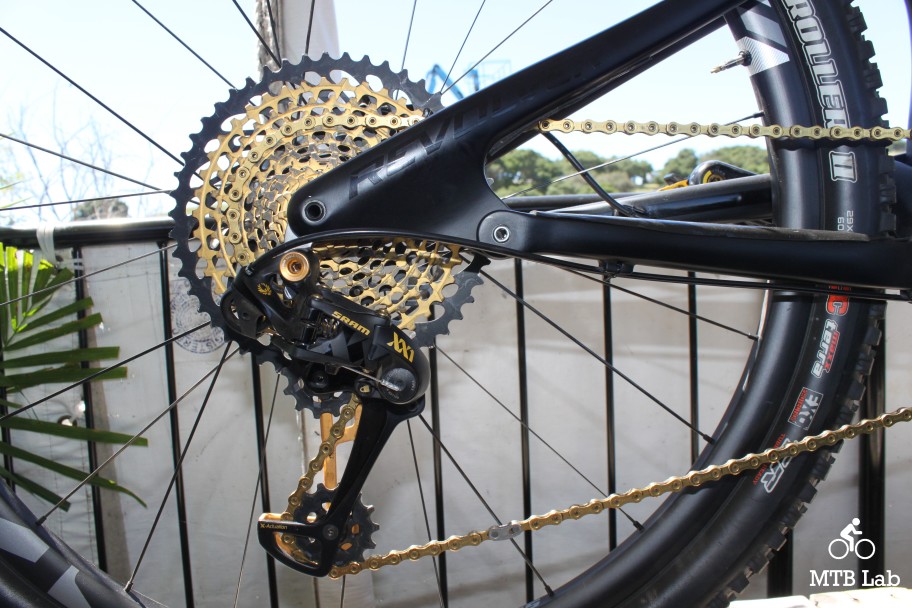
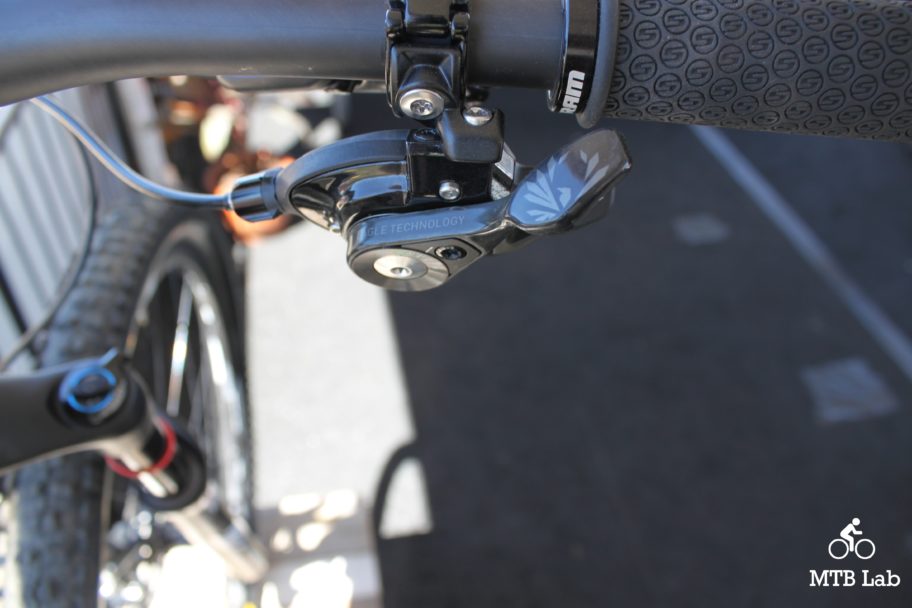
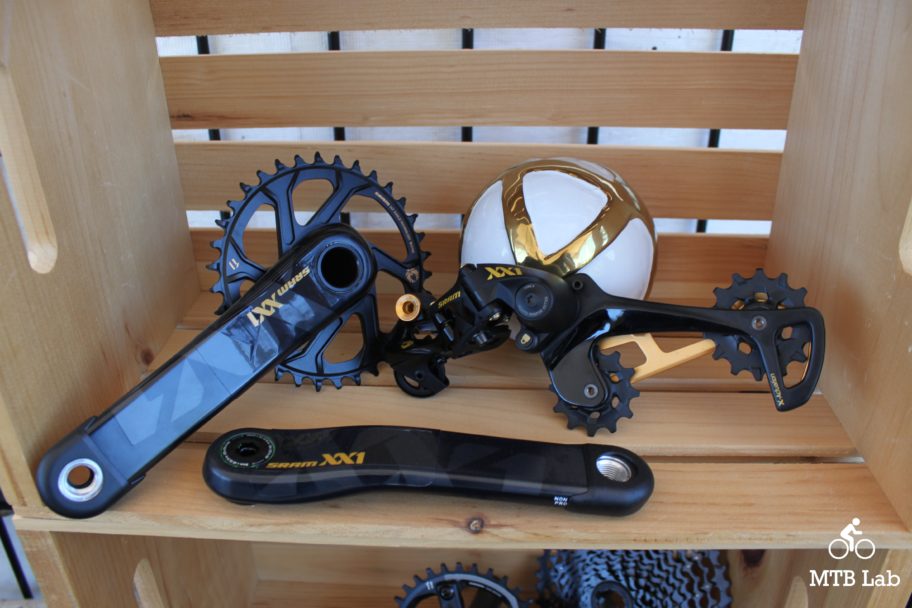
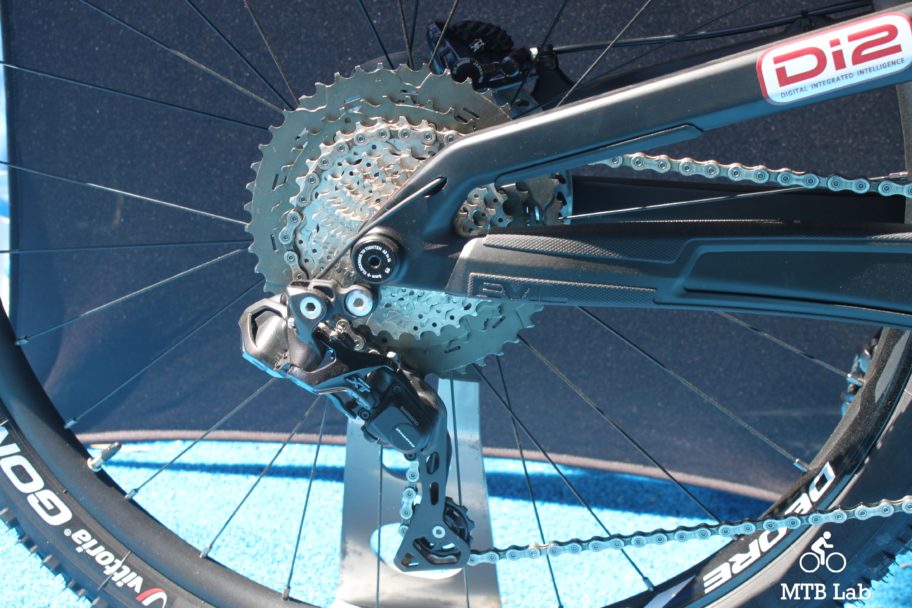
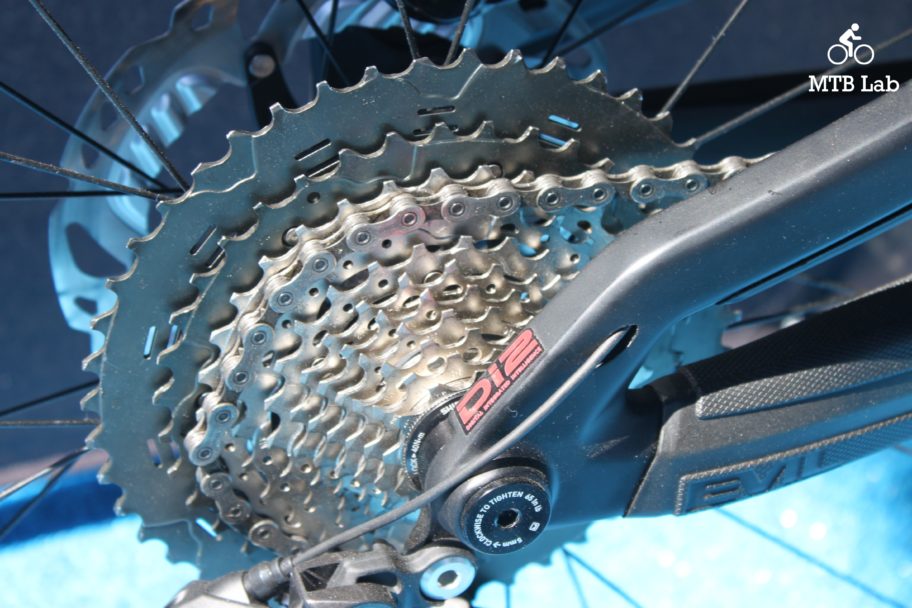
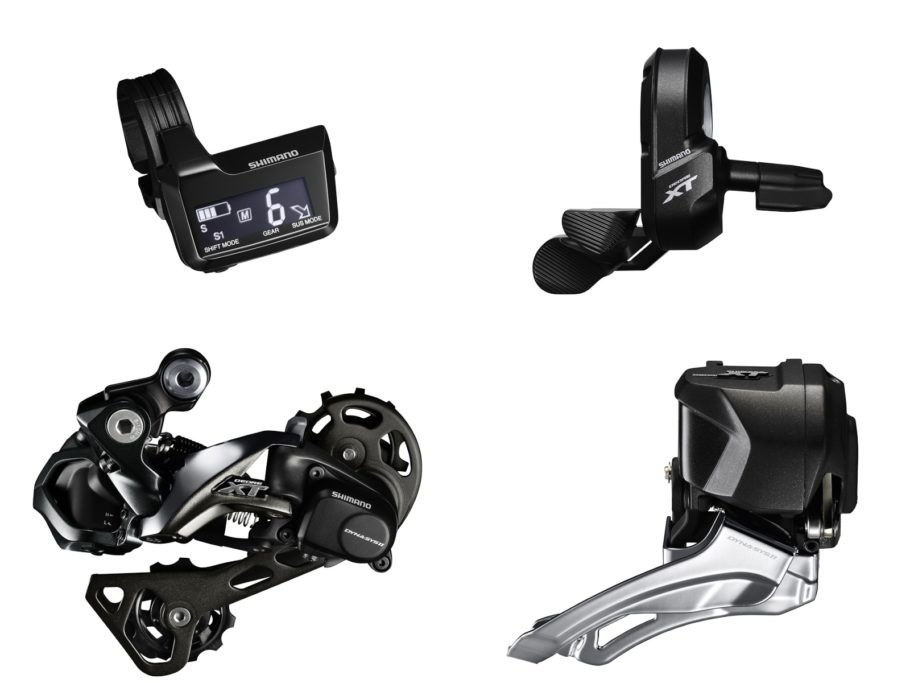
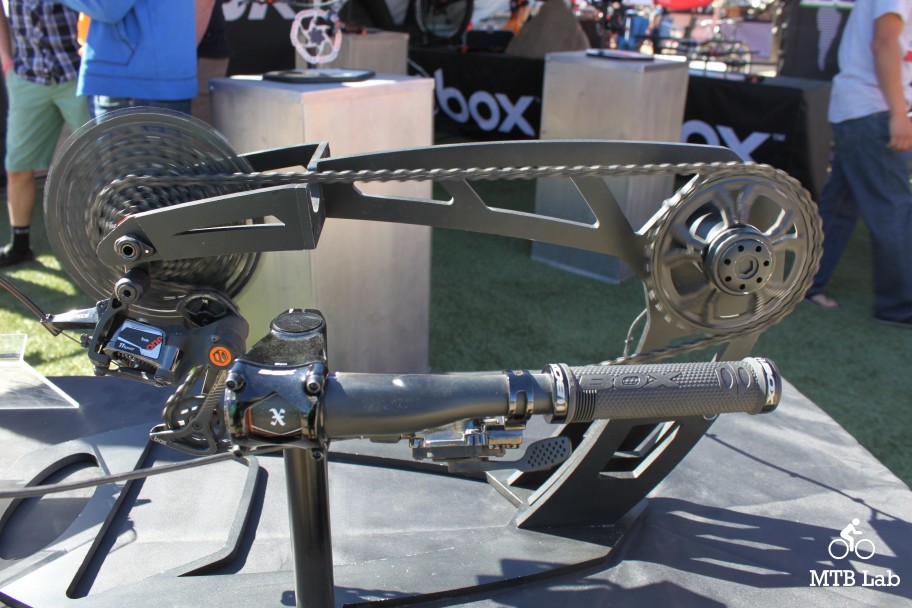
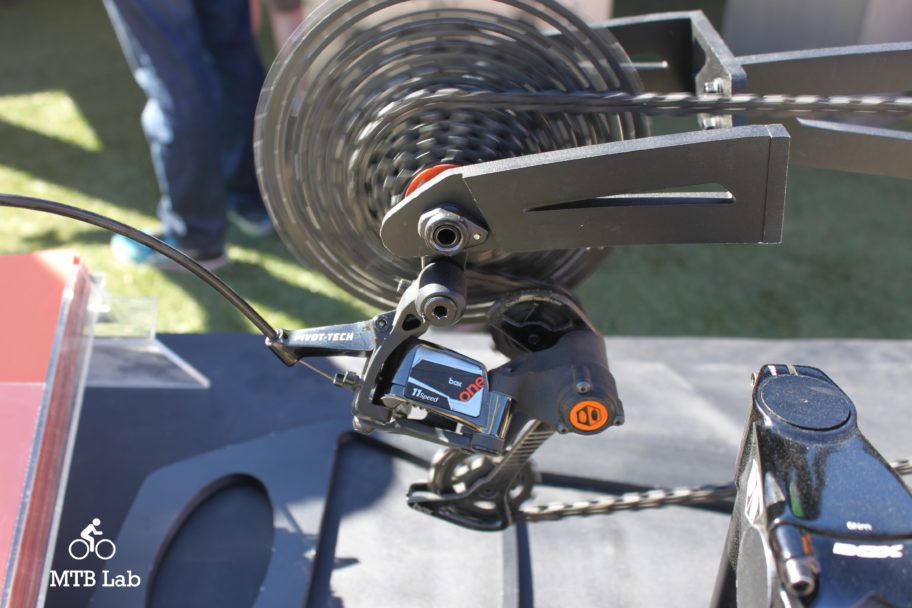
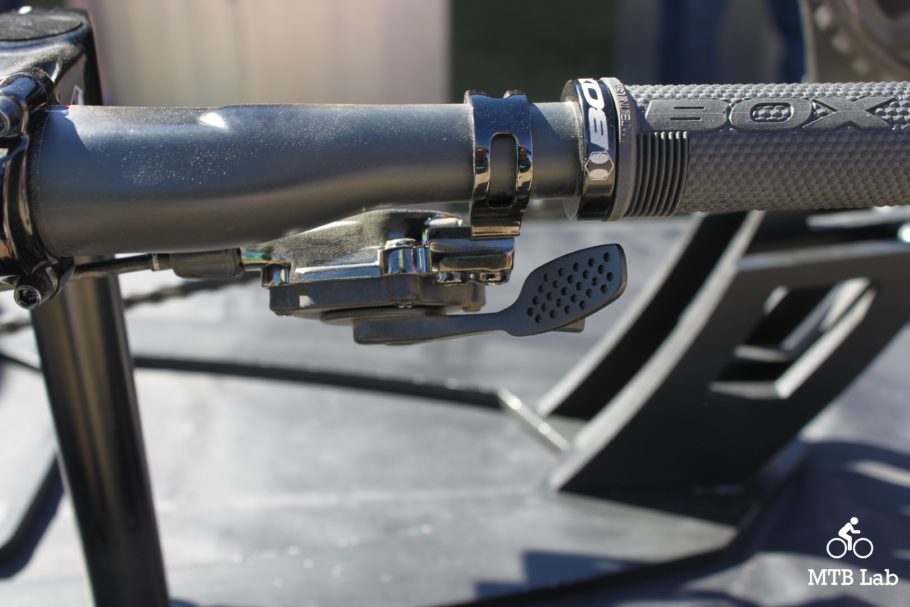





{ 0 comments… add one now }